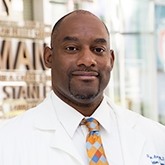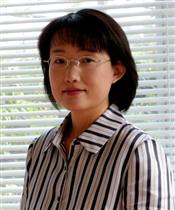International Council Symposium: AAPM Global Engagement; Planning for the Future
S Avery1*, S Parker2*, J Palta3*, R Jeraj4*, G Kim5*, S Wadi-Ramahi6*, (1) University of Pennsylvania, Philadelphia, PA, (2) Wake Forest Baptist Health High Point Medical Center, High Point, NC, (3) Virginia Commonwealth University, Richmond, VA, (4) University of Wisconsin, Madison, WI, (5) University of California, San Diego, La Jolla, CA, (6) University of Pittsburgh Medical Center, Pittsburgh, PA
Presentations
10:38 AM Global Need Assessment - S Parker, Presenting Author
10:46 AM Global Collaborations - J Palta, Presenting Author
10:54 AM Global Research and Scientific Innovation - R Jeraj, Presenting Author
11:02 AM Global Data and Information Exchange - G Kim, Presenting Author
11:10 AM Global Clinical Education and Training - S Wadi-Ramahi, Presenting Author
11:18 AM Q&A - J Palta, Presenting Author
SU-A-TRACK 1-0 (Sunday, 7/25/2021) 10:30 AM - 11:30 AM [Eastern Time (GMT-4)]
Non communicable diseases (NCD) cause one in every six deaths worldwide, more than major communicable diseases (AIDS, tuberculosis, and malaria) combined. Cancer is the most dominant NCD. The global incidence of cancer is increasing rapidly in countries with low and medium human development indices (HDI). It is anticipated that by 2022, up to 70% (14 million) of the 20 million annual new cancers are expected to occur in these countries. Multimodality imaging for the diagnosis and radiotherapy for treatment will be required for these patients to cure localized disease and to effectively palliate symptoms. The imaging and radiotherapy equipment manufacturers anticipate that the growth of their new business is going to occur in low to middle income countries (LMICs) with a projection of over 200% growth in equipment sales in the next 5 years. Correspondingly, the global pool of radiation oncologists and radiologists needs to increase by 100%, medical physicists and dosimetrists by 300%, and technologists by over 300%. Unfortunately, this personnel shortage is exacerbated by the fact that many of the LMICs do not have the resources and infrastructure to train and educate the growing numbers of professionals needed in the safe and effective use of diagnostic and therapeutic technologies.
The professional organizations such as AAPM, ASTRO, RSNA, and ESTRO; international agencies such as IAEA and UICC; NGOs such as ICEC, Rayos Contra Cancer, Radiating Hope, and RADAID International; and vendors are doing their best to mitigate these challenges by offering their own solutions. NGOs have tried to fill the coordination gap, but there has been limited success without full institutional backing. Thus, there remains little or no coordination of these efforts at the present time while the financial commitment, especially by radiotherapy vendors and the IAEA is substantial.
AAPM has made a strategic decision to coordinate all international activities under the umbrella of International Council. The committee structure of IC will support efforts in education, clinical training, research, and a broader scope of collaboration with other global stakeholders that has largely been unexplored. It will provide opportunities to grow its base globally and improve domestically and it will clearly demonstrates AAPM’s global leadership in the field of medical physics.
Learning Objectives:
1. Understand the need for global collaboration.
2. Understand the scope of activities of categorical committees of International Council.
3. Understand the need for coordination and harmonization of projects with other global stakeholders.
Handouts
- 166-60092-15631646-171557-683475417.pdf (Stephanie Parker)
Keywords
Not Applicable / None Entered.
Taxonomy
Not Applicable / None Entered.
Contact Email















